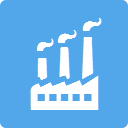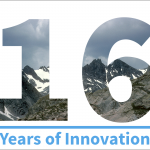Fracking’s Role in Reducing CO2 Emissions
There’s no doubt that hydraulic fracking has become a popular term today, but have you heard of cracking? I am referring to the drop in carbon emissions partly made possible by the cheaper fuel source brought forth by fracking. In fact, American CO2 emissions have fallen nearly 13 percent since 2007, which makes President Obama’s promise to cut these emissions by 17 percent between 2005 and 2020 possibly obtainable without enacting a major new legislation like cap-and-trade.
While certain regulations and tax break incentives have helped make this reduction possible, the main driving force is economics. Not only have Americans been encouraged to drive less and purchase vehicles with better fuel economy due to high prices, but power companies have also been making the switch from coal to natural gas, a cleaner and cheaper fuel. These actions have resulted in the drop in CO2 emissions, and it’s doubtful that they will change too severely in the near future. Or to put it simply, market forces have taken care of CO2—for now.
However, while cutting greenhouse gas emissions is a positive, it may come with a high price to pay if water quality around fracking sites is not properly monitored and managed. Many concerns have already arisen about chemicals and methane potentially leaking from wells and contaminating water supplies and air. If we don’t monitor aquifers around fracking sites and end up contaminating them, all gains on reduced emissions could quickly be lost as water treatment is expensive, requires a large amount of energy, and takes a long time, which again translates into more carbon emissions.
It is important for companies to take responsibility for their fracking sites, so that the decrease in CO2 emissions and the protection of our water resources may occur simultaneously. In order to ensure that water quality is preserved, a sufficient amount of monitoring needs to happen at a reasonable frequency. Aquifer and surface water samples must be collected and analyzed for probable contaminants. Locus offers the industry leading water quality management software, EIM, to assist companies that face this challenge. EIM is a Cloud-based data management system that supports all management and workflow processes necessary to better determine water quality, so that cracking may be accomplished safely.



